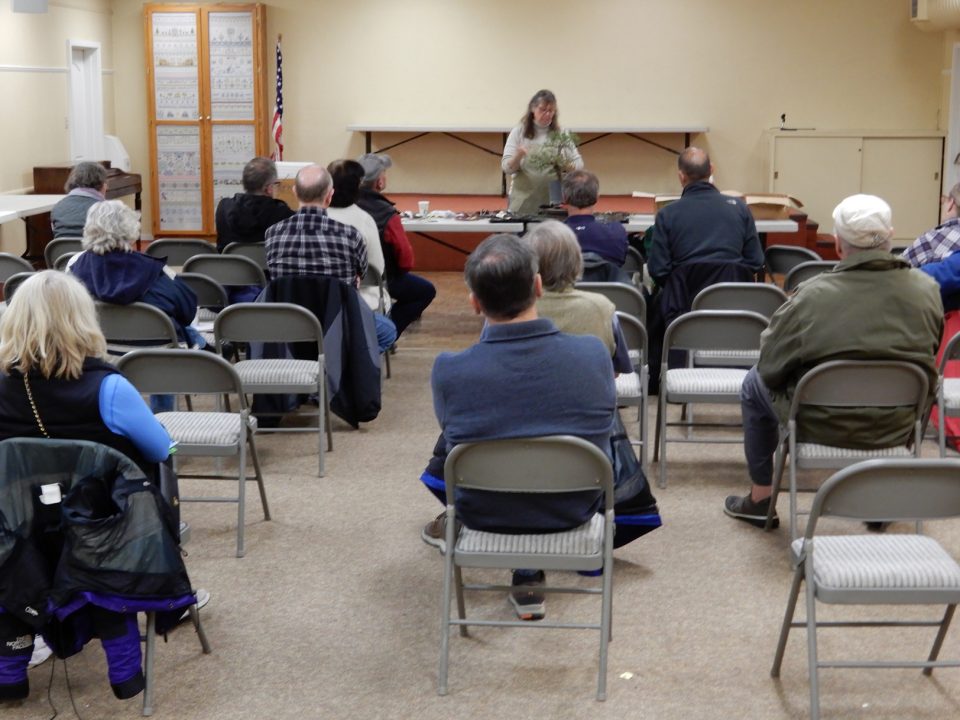On November 26, 2019, our club Sensei Kathy Shaner performed a demonstration on the styling of a juniper. The juniper demo tree was furnished by Bob Shimon of Mendocino Coast Bonsai, who purchased the tree from Takashi Shimazu at the GSBF Convention 42, Riverside, California, October 24-27, 2019.
The demo showed movement in the trunk and deadwood feature.
Kathy said one should ensure the tree material is well hydrated before working on it. She like the front view which was chosen for its movement and Shari deadwood feature. The front view is always towards the viewer. She described her plans to cut the foliage in order to encourage back budding on branches. The back budding will occur closer in to the trunk and cause the foliage to appear more compact.
Flow or direction of the branches was considered in the styling of the demo tree. Kathy experimented with the angle of the tree to expose a more interesting line and movement.
Wiring the branches is critical in styling any bonsai. Kathy emphasized the correct size or gauge of wire to do the job of controlling the movement instilled in setting branches. If one has doubt, use one gauge lower with copper wire. Kathy said wrap the copper wire loosely around the branches. This will allow for bending and twisting the branches. It will also allow the copper wire to remain on the branches longer and avoid wire cutting into the bark.
In bending branches, Kathy demonstrated exercising the branch first. Just using your fingers and move the branch to be bent up and down or twist side to side. This will make the branch more flexible prior to wiring and bending it. Then wire the branch and set it by bending and twisting the branch in to the position desired. On conifers like the juniper, bend the branches downward. This action will allow more sun light to reach the interior of the tree. One last note on bending branches is to bend or establish movement near the trunk.
Kathy explained the setting of the first, second and back branches. She created a flow or direction of the branches to appear as if the wind influenced them.
Upon completion of the demonstration, REBS member Diane Matzen won the raffle for the demo juniper.


































